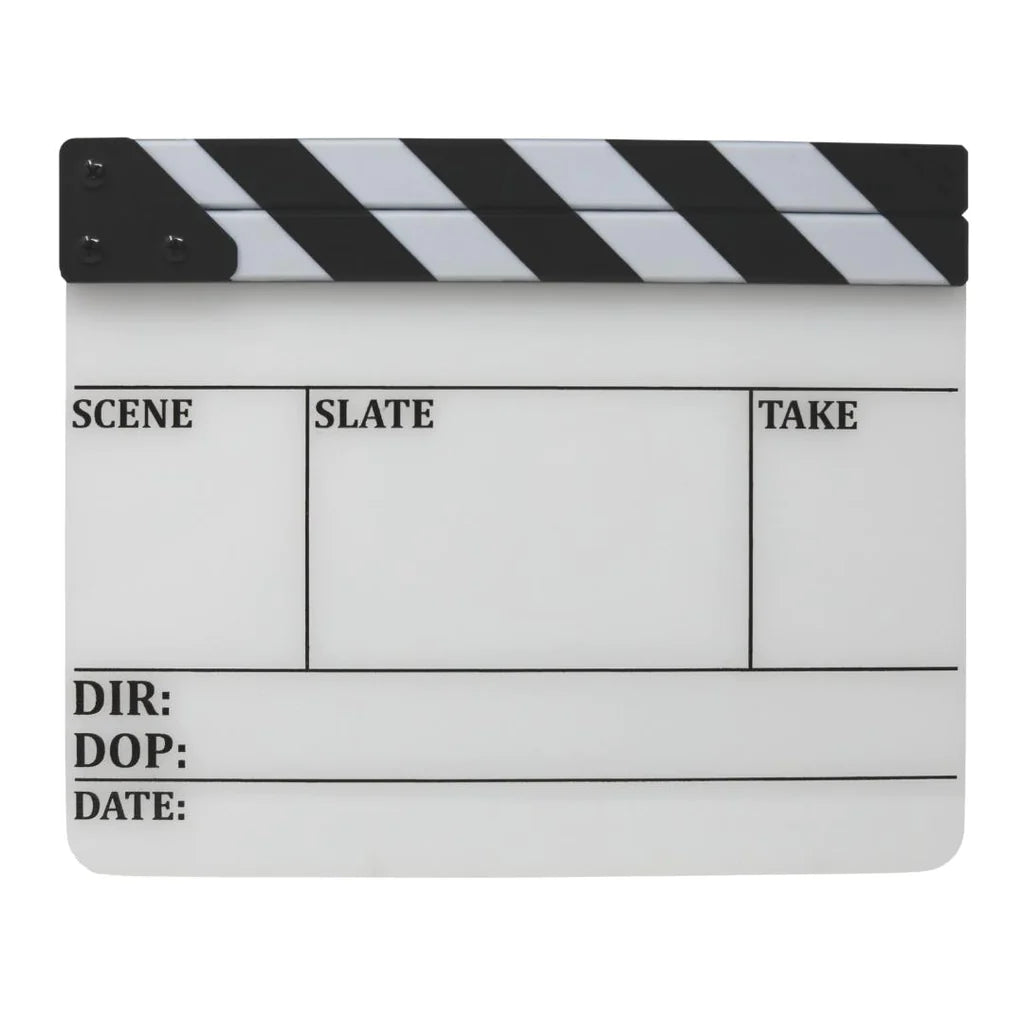
The Brief History of Clapperboards: The Time-Tested Tool of Filmmaking
In the bustling world of movie production, amidst the dazzling lights, dynamic camera angles, and the colourful cast and crew, there lies a humble, unassuming tool that stands as an integral part of the cinematic universe. An artefact so ubiquitous that it has become a symbol of filmmaking itself – the clapperboard.
A Blast From The Past: The Inception of Clapperboards
Our journey into the world of clapperboards begins in the early days of cinema, during the late 19th and early 20th centuries. In those times, audio and video were recorded separately, causing a substantial challenge in synchronising the two during the post-production process. Here's where the clapperboard enters the scene, quite literally.
The clapperboard's two primary components, the slate and the clapper, were initially separate tools. The slate, a simple chalkboard, was used to identify shots and takes visually. On the other hand, the clapper, which made a distinct clapping sound, was used to mark points on the separate audio track.
When filmmakers realised they could combine these tools to streamline the synchronisation process, the clapperboard was born. By the 1920s, the clapperboard became an essential tool in the filmmaking process, with the clapping sound being used to perfectly match the audio and video.
The Evolution of the Clapperboard: From Simplicity to Sophistication
As the film industry matured, so did the clapperboard. While the basic design of the slate and clapper remained consistent, the technology integrated into this tool evolved to meet the changing needs of filmmakers.
The shift from black-and-white to colour filming posed a new challenge. Standard chalk was hard to see against the slate in colour film. The solution? Use brightly coloured chalk, improving the visibility of the information written on the slate.
However, the chalkboard had its limitations, leading to the introduction of engraved acrylic boards. These boards were not only more durable but also easier to clean, making them more efficient for fast-paced shooting schedules. Today, these engraved acrylic clapperboards have become the most common, marking a significant step in the evolution of this iconic tool.
The advent of digital filmmaking brought the next significant shift. The wooden clapper was replaced by electronic sensors. This digital clapperboard, also known as a smart slate, could automatically generate and display information such as date, time, and scene details.
Moreover, the smart slate could sync wirelessly with the camera and audio equipment, marking a new era of efficiency and accuracy in audio-visual synchronisation.
Clapperboards Today: Icons of the screen
Today, the clapperboard stands as a proud icon of cinema, representing the magic of movie-making in its raw, behind-the-scenes form. Despite the rapid advancements in technology, many filmmakers still prefer the traditional acrylic clapperboard.
Clapperboards are now used not only for their functional purpose but also as a canvas for artistic expression. They are often personalised with colourful designs, logos, or signatures of the cast and crew, embodying the spirit and identity of the production.
Conclusion: A Timeless Tool
The clapperboard, despite its simple appearance, has a rich history that intertwines with the evolution of cinema itself. From the humble chalkboard and wooden clapper of the silent era to the engraved acrylic boards of today, the clapperboard has adapted and evolved, standing as a testament to the timeless art of filmmaking.
In an industry dominated by digital advancements, the clapperboard's lasting presence is a reminder of the tactile and physical aspects of cinema that make it so unique. It symbolises the harmony of sound and visuals, the synchronisation of different elements, and the coordination of diverse talents that make a film possible.
So, the next time you see a clapperboard in action, remember the critical role it plays behind the scenes. It's not just a tool for synchronisation, but a piece of history, a symbol of the filmmaking process, and an icon of cinema that has stood the test of time.



Leave a comment